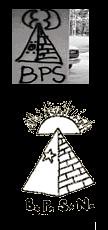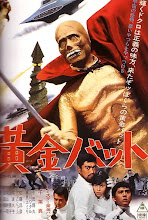Street Magick
Agent Sub Zero was commenting on the influx of occult oriented bloggers.
I figure you might be interested in some Gangsta Magick.
Noble Drew Ali's esoteric system gave an edge to the early "community organizers" in black America.
Here are three snips I found on google, I did not grab the URL's but a search should turn up plenty...

Gangs
In the late 1950s early 1960s, Jeff Fort, (aka Chief Malik, Angel) and Eugene Hairston (aka Chief Bull) ran a small clique around 63rd and Blackstone in Woodlawn called the Blackstone Rangers. By the middle of the 60s, Jeff Fort and Chief Bull had pulled together 21 street organizations, and the Blackstone Rangers, now known as the Black P Stone Nation had a strong political identity, while also, of course, involved in criminal activities. After Eugene Hairston was locked up an released in the late 60s, Jeff Fort took sole leadership of the street organization of 50,000 members. In the 70s the Stones got more political and in involved in community power. It even received funding from the Federal Government to run a job training program in Woodlawn. Predictably, it was not long before the government came down on the Stones for malfeasance, and Jeff Fort goes to prison until '76. While in jail, Jeff Fort was influenced by the Nation of Islam and upon his release renamed the Rangers the Moorish Temple of America, and eventually the El Rukns.
The gang adopted the beliefs of the Moorish Science Temple of America (Longo, 1998, p. 1). The People Alliance also use a pyramid to symbolize their group which means "cornerstone" and has biblical references (Gang Identification Manual, 1996). From the appearance of this information, it could be said that some young people are attracted to gangs for religious reasons. Youth may not be making traditional connections with churches, but they are making connections with religion through gangs. Technically, these symbols could be used for reasons other than religion. (Not much information was acquired, pertaining to religion, so further conclusions about the relationship between gangs and religion are uncertain. Many questions remain unanswered.)
Moorish Science Temple
But Noble Drew's definition of Islam didn't bear much resemblance to what you might hear from a mullah at al-Azhar University. Drew taught that Morocco was the promised land of the Bible and the Koran, symbolizing a state of illuminated consciousness that was obtained through a hodge-podge of occultist and eastern mystical practices.
The combination of ideas was sort of a Moorish spin on the European trend of theosophism, a 19th century movement that believed all religions are basically describing the same thing in different words. Critics of the Temple leveled charges of antinomianism against the sect's members, but the allegations weren't any more true than the 500 previous times someone had used that word to describe a religion they didn't like.
He drew on Buddhism and indigenous religions to guide a practice that employed the terminology of Islam, but he structured the Moorish Temple on a Masonic blueprint, including a version of their charter and initiation procedures. A Moorish Temple charter was modeled after a Masonic lodge charter:
I figure you might be interested in some Gangsta Magick.
Noble Drew Ali's esoteric system gave an edge to the early "community organizers" in black America.
Here are three snips I found on google, I did not grab the URL's but a search should turn up plenty...

Gangs
In the late 1950s early 1960s, Jeff Fort, (aka Chief Malik, Angel) and Eugene Hairston (aka Chief Bull) ran a small clique around 63rd and Blackstone in Woodlawn called the Blackstone Rangers. By the middle of the 60s, Jeff Fort and Chief Bull had pulled together 21 street organizations, and the Blackstone Rangers, now known as the Black P Stone Nation had a strong political identity, while also, of course, involved in criminal activities. After Eugene Hairston was locked up an released in the late 60s, Jeff Fort took sole leadership of the street organization of 50,000 members. In the 70s the Stones got more political and in involved in community power. It even received funding from the Federal Government to run a job training program in Woodlawn. Predictably, it was not long before the government came down on the Stones for malfeasance, and Jeff Fort goes to prison until '76. While in jail, Jeff Fort was influenced by the Nation of Islam and upon his release renamed the Rangers the Moorish Temple of America, and eventually the El Rukns.
The gang adopted the beliefs of the Moorish Science Temple of America (Longo, 1998, p. 1). The People Alliance also use a pyramid to symbolize their group which means "cornerstone" and has biblical references (Gang Identification Manual, 1996). From the appearance of this information, it could be said that some young people are attracted to gangs for religious reasons. Youth may not be making traditional connections with churches, but they are making connections with religion through gangs. Technically, these symbols could be used for reasons other than religion. (Not much information was acquired, pertaining to religion, so further conclusions about the relationship between gangs and religion are uncertain. Many questions remain unanswered.)
Moorish Science Temple
But Noble Drew's definition of Islam didn't bear much resemblance to what you might hear from a mullah at al-Azhar University. Drew taught that Morocco was the promised land of the Bible and the Koran, symbolizing a state of illuminated consciousness that was obtained through a hodge-podge of occultist and eastern mystical practices.
The combination of ideas was sort of a Moorish spin on the European trend of theosophism, a 19th century movement that believed all religions are basically describing the same thing in different words. Critics of the Temple leveled charges of antinomianism against the sect's members, but the allegations weren't any more true than the 500 previous times someone had used that word to describe a religion they didn't like.
He drew on Buddhism and indigenous religions to guide a practice that employed the terminology of Islam, but he structured the Moorish Temple on a Masonic blueprint, including a version of their charter and initiation procedures. A Moorish Temple charter was modeled after a Masonic lodge charter:


1 Comments:
very interestin' my good titan, thats definately a new twist on the whole 'magik' thing. Maybe I'll start up an interest in gangsta magik!
Post a Comment
<< Home